Time:2025-07-17
The Critical Role of Neon Open Signs in 24-Hour Dining
For 24-hour restaurants, where foot traffic peaks in late nights and early mornings, neon open signs for restaurant windows serve as more than just indicators—they are lifelines of visibility and trust. These signs communicate availability to weary travelers, night-shift workers, and late-night diners, cutting through darkness, urban glare, and inclement weather to signal “we’re open.” Beyond functionality, they reinforce brand identity: a retro diner might opt for classic red-and-white glass neon, while a modern fast-casual spot could use sleek LED neon in brand colors. This article explores the technical design, strategic placement, and operational considerations of these essential signs, offering a comprehensive guide for 24-hour establishments aiming to maximize visibility and customer trust.
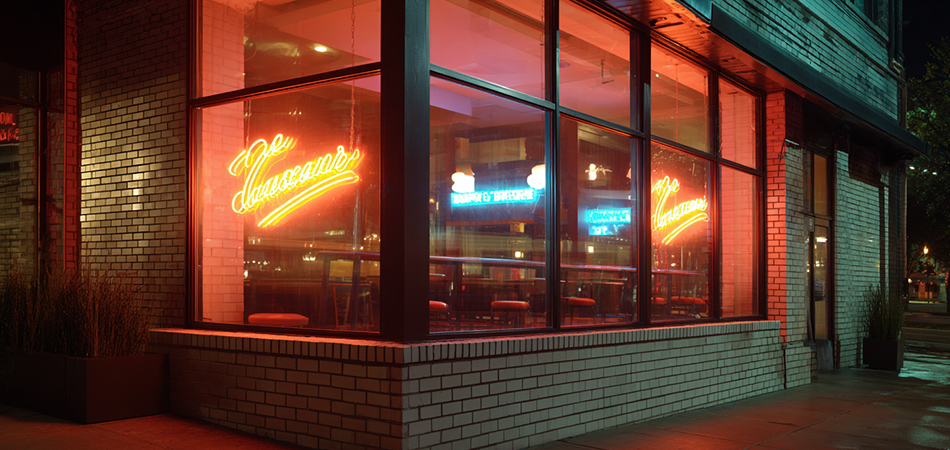
Technical Foundations: Engineering for Round-the-Clock Performance
Neon Technology for 24/7 Reliability
LED Neon Flex: The Workhorse of Continuous Operation
Durability and Efficiency: Unlike fragile glass neon, LED neon flex—encased in UV-stabilized silicone or PVC—withstands constant use, temperature fluctuations, and accidental impacts from window cleaning or debris. Its low-voltage (12V/24V DC) operation reduces energy consumption by 60-70% compared to traditional neon, critical for 24-hour runtime.
Color Consistency: Available in vibrant, fade-resistant hues (red, white, blue, and brand-matched custom colors), LED neon maintains uniform brightness even after thousands of hours, ensuring the “OPEN” message remains vivid at 3 AM as it does at 3 PM.
Traditional Glass Neon: Nostalgia with Modern Upgrades
Authentic Glow: For restaurants leaning into retro aesthetics, glass neon—filled with neon (red) or argon-mercury (blue/green) gases—delivers the warm, diffused light synonymous with classic diners. Modern glass neon uses reinforced tubing and shatter-resistant coatings to withstand continuous operation.
Transformer Efficiency: Newer magnetic transformers reduce energy waste, making glass neon a viable option for 24-hour use, though it remains less efficient than LED alternatives.
Weatherproofing for Window Installation
IP Ratings for Window Environments:
IP65: Resistant to water jets and dust, ideal for windows exposed to rain or condensation.
IP67: Suitable for humid climates or windows prone to splashes (e.g., near outdoor seating), offering temporary submersion protection.
Sealed Edges and Casing: LED neon flex uses heat-sealed silicone edges; glass neon employs rubber gaskets around electrical connections to prevent moisture ingress, critical for window-mounted signs in all climates.
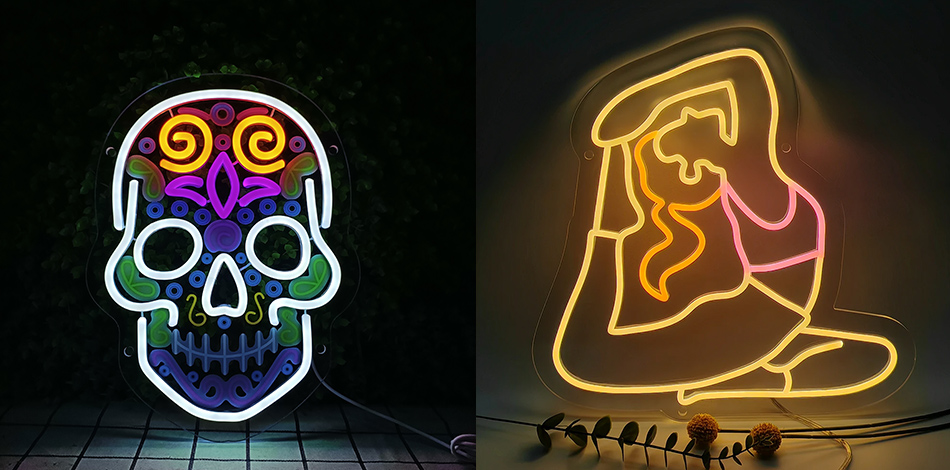
Design Principles for Maximum Nighttime Visibility
Visual Hierarchy and Legibility
Bold Typography: “OPEN” in block letters (8-12 inches tall) with thick strokes ensures readability from 50+ feet. Sans-serif fonts (e.g., Impact, Helvetica Bold) outperform scripts in low light, as they minimize light bleed and maximize contrast.
High-Contrast Combinations:
Red on Black: A classic pairing, with red neon cutting through darkness and black backings enhancing visibility.
White on Dark Blue: Offers a modern twist, with white neon remaining visible even in urban light pollution.
Peripheral Cues: Add subtle accents (e.g., a small neon arrow pointing to the entrance or a minimalist border) to guide attention without cluttering the “OPEN” message.
Size and Placement for Window Optimization
Eye-Level Positioning: Mount signs 4-5 feet above ground level, aligning with pedestrian eye lines and driver sightlines (for drive-thru windows). This avoids obstruction by window displays or condensation.
Window Compatibility:
Clear Glass: Full-coverage “OPEN” signs work best, with backing materials (acrylic, metal) that block glare from interior lights.
Tinted Glass: Use higher-brightness neon (e.g., 30% brighter than standard) to compensate for light absorption, ensuring visibility from both sides.
Brand Alignment and Aesthetic Integration
Retro vs. Modern Themes:
Diners and Classic Eateries: Glass neon with “OPEN 24 HOURS” in red, paired with retro motifs (e.g., a small neon coffee cup) to reinforce nostalgia.
Contemporary Chains: Slim LED neon in brand colors (e.g., yellow for a burger chain, green for a health-focused spot) with sleek aluminum backings, matching interior design language.
Subtle Branding: Incorporate miniaturized logos (e.g., a tiny neon fork or pizza slice) adjacent to “OPEN” to reinforce identity without overshadowing the primary message.
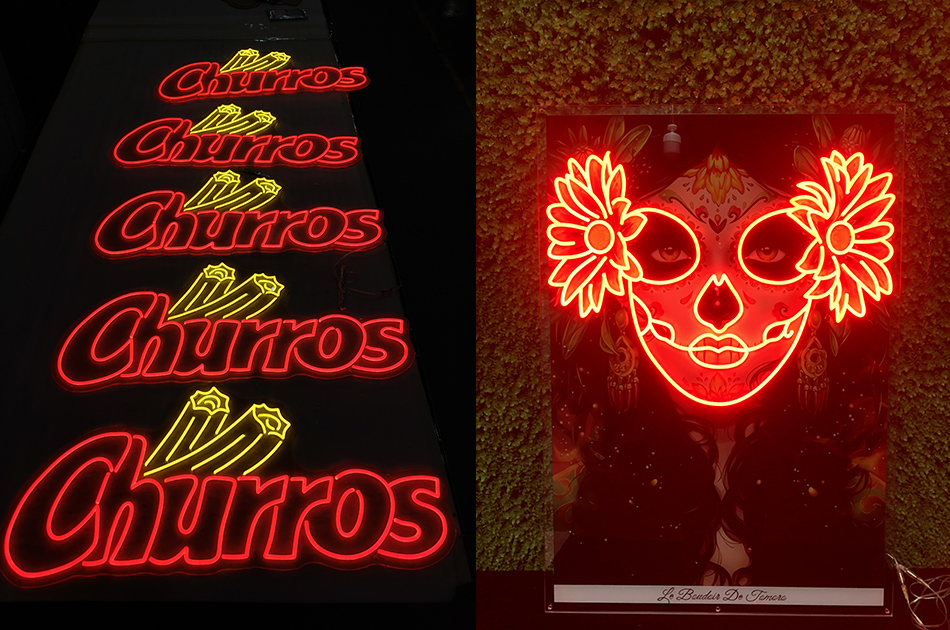
Strategic Applications in 24-Hour Restaurant Models
Urban Diners and Late-Night Eateries
High-Traffic Corridors: Signs with motion sensors that brighten slightly when pedestrians approach (e.g., 20% increased intensity) to capture attention in busy downtown areas. A downtown diner might use red-and-white glass neon with a “24 HOURS” subtext, ensuring clarity for bar-hoppers and night workers.
Noise-Reduction Features: LED neon’s silent operation avoids disturbing nearby residents, unlike flickering fluorescent signs, making it ideal for urban neighborhoods with noise restrictions.
Highway and Travel Plazas
Distance Visibility: Oversized “OPEN” signs (18-24 inches tall) with anti-glare coatings, visible to drivers from ¼ mile away. LED neon’s consistent brightness ensures visibility in rain, fog, or headlights, critical for highway rest stops.
Solar-Assisted Options: For remote locations, solar-powered LED neon signs with battery backups ensure operation during power outages, a vital feature for truck stops and rural 24-hour spots.
Drive-Thru and Fast-Casual Chains
Dual-Sided Displays: Signs visible from both street and drive-thru lanes, with “OPEN” on one side and “ORDER HERE” on the other, using synchronized lighting to guide customers through the ordering process.
Dynamic Updates: LED neon signs with programmable segments to display “OPEN” during peak hours and “LIMITED MENU” during late nights, adjusting messaging without compromising visibility.
Healthcare and Hospital Adjacent Restaurants
Trust-Building Design: Soft white or blue neon to convey cleanliness and reliability, with “OPEN 24/7” in clear, calm typography. These signs reassure hospital staff, patients, and visitors seeking consistent meal options.
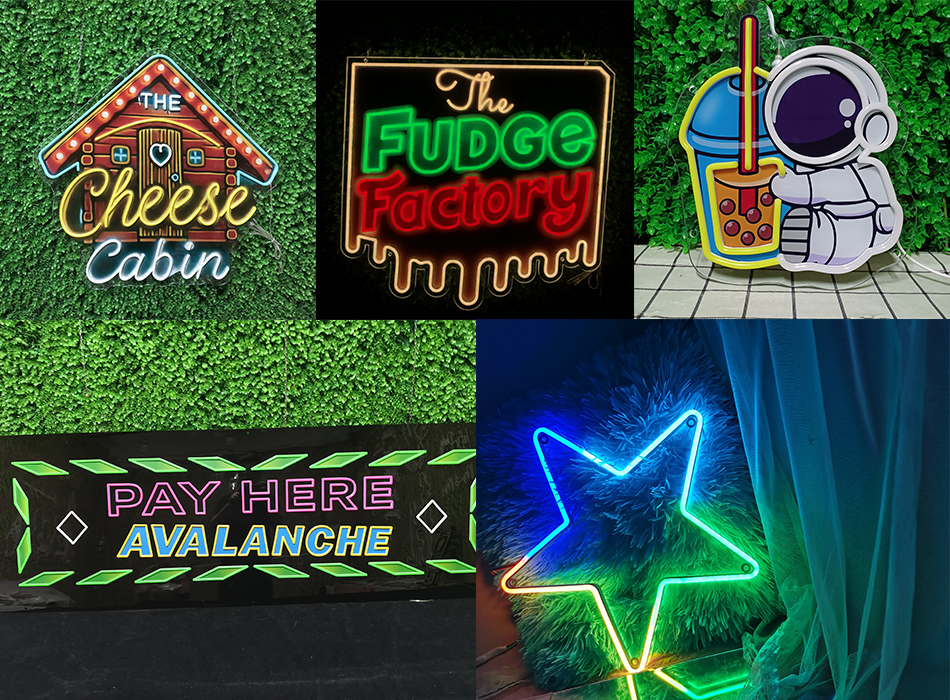
Installation and Maintenance for 24/7 Reliability
Professional Installation: Ensuring Safety and Performance
Electrical Compliance:
Low-Voltage Wiring: LED neon uses 12V/24V systems, eliminating high-voltage risks and simplifying installation. Glass neon requires certified electricians to install transformers, ensuring compliance with UL 2161 (neon sign safety standards).
Weatherproof Connections: Outdoor-facing wires use IP67-rated junction boxes; indoor connections are sealed with silicone to prevent dust and grease buildup (common in restaurant kitchens).
Mounting Security:
Adhesive vs. Brackets: High-strength, heat-resistant adhesives work for lightweight LED signs; metal brackets with anti-theft screws secure heavier glass neon, critical for ground-floor windows in urban areas.
Routine Maintenance: Sustaining Performance
Daily Visual Checks: Staff inspect for dimmed segments, moisture inside casings, or loose mounting—quick fixes (e.g., tightening brackets) prevent costly repairs.
Weekly Cleaning:
Exterior: Wipe with microfiber cloths and mild detergent to remove fingerprints, grease, or rain spots, avoiding abrasive tools that scratch casings.
Interior: Use compressed air to blow dust from LED diodes or glass tubes, ensuring unobstructed light output.
Quarterly System Tests:
LED Neon: Check for voltage drops using multimeters, replacing faulty segments to maintain uniform brightness.
Glass Neon: Inspect for gas leaks (faint hissing, dimming) and replace transformers if buzzing occurs, signs of wear in 24-hour operation.
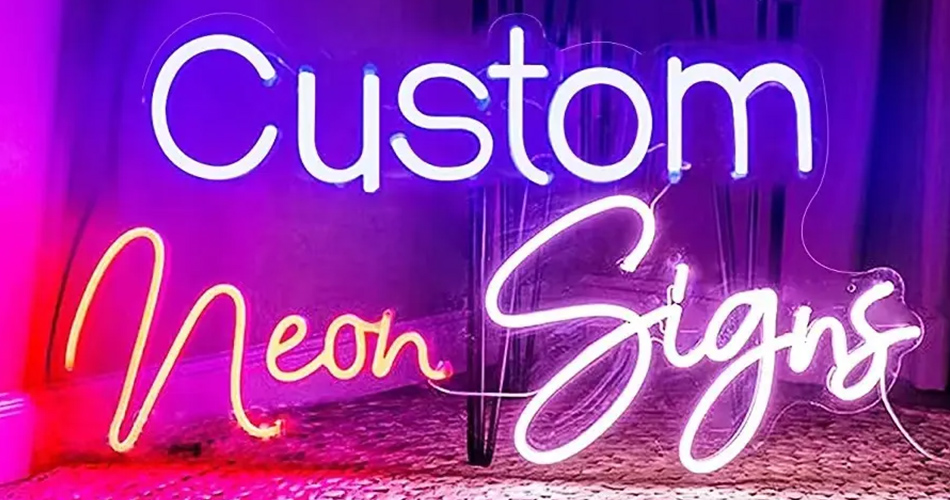
Compliance and Safety Considerations
Electrical and Fire Codes
UL Certification: Ensure signs meet UL 1838 (sign lighting) and UL 94 (flame resistance) standards, required for commercial kitchen proximity. LED neon’s low heat output (max 140°F) reduces fire risks compared to incandescent alternatives.
Emergency Shutdowns: Integrate signs with fire alarm systems to auto-shut off during emergencies, a code requirement in most jurisdictions.
Light Pollution and Neighborhood Standards
Dimming Capabilities: Use photocell sensors to reduce brightness by 30-50% during quiet hours (2-5 AM) in residential areas, complying with local light pollution ordinances while maintaining visibility.
Directional Lighting: Angled casings direct light outward, minimizing glare into adjacent windows—critical for restaurants near apartment buildings.
Innovations Shaping 24-Hour Neon Open Signs
Smart Technology Integration
IoT-Enabled Controls: Wi-Fi-connected signs sync with POS systems, auto-updating to “CLOSED” during unexpected closures (e.g., staff shortages) and sending alerts to managers via apps.
Adaptive Brightness: Sensors adjust output based on ambient light (brighter in fog, dimmer in streetlights), optimizing energy use without sacrificing visibility.
Sustainable Advancements
Energy Harvesting: Solar panels integrated into sign backings power LED neon during daylight, reducing grid reliance—ideal for eco-conscious chains and remote locations.
Recyclable Materials: LED casings made from 50% recycled silicone; glass neon tubes use lead-free glass, aligning with restaurant sustainability goals (e.g., LEED certification).
Anti-Vandal and Durability Enhancements
Impact-Resistant Glass: Tempered glass for neon tubes, withstands minor impacts (e.g., accidental bumps from window cleaners).
Tamper-Proof Design: Hidden screws and glued casings deter theft, a growing concern for 24-hour establishments in high-traffic areas.
Overcoming Common Challenges
Challenge 1: Condensation in Humid Climates
Solution: Integrate small vent holes in casings (covered with moisture-wicking membranes) to allow air circulation, preventing fogging that obscures “OPEN” messages.
Challenge 2: Grease Buildup in Kitchen-Adjacent Windows
Solution: Use oleophobic coatings on casings, repelling kitchen grease and making cleaning faster—critical for signs near fry stations or grills.
Challenge 3: Power Outages Disrupting Visibility
Solution: Backup batteries (12-24 hours runtime) activate automatically during outages, ensuring the sign remains lit—vital for 24-hour restaurants where closures risk losing regulars.
Conclusion: Neon Open Signs as 24-Hour Brand Ambassadors
Neon open signs for 24-hour restaurant windows are more than operational tools—they are silent brand ambassadors, communicating reliability, accessibility, and personality to customers navigating the night. By blending technical durability, strategic design, and compliance with safety standards, these signs ensure 24-hour establishments remain visible, trusted, and profitable through every hour of operation.
As technology advances, from smart controls to sustainable materials, these signs will continue to evolve—balancing nostalgia with innovation, efficiency with visibility. For 24-hour restaurants, investing in a well-designed neon open sign isn’t just about staying open—it’s about shining bright when customers need them most.